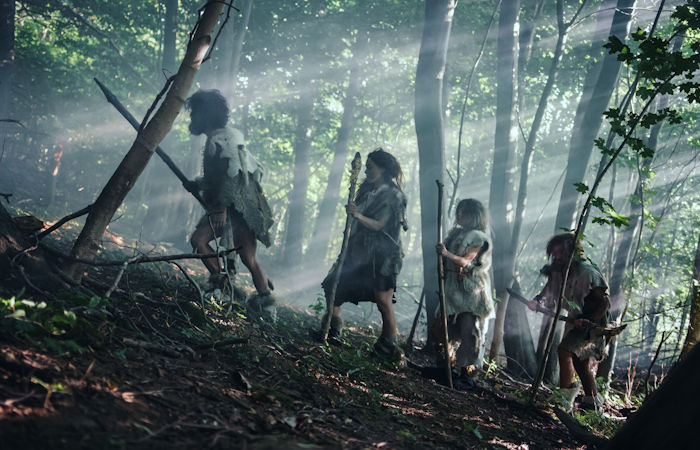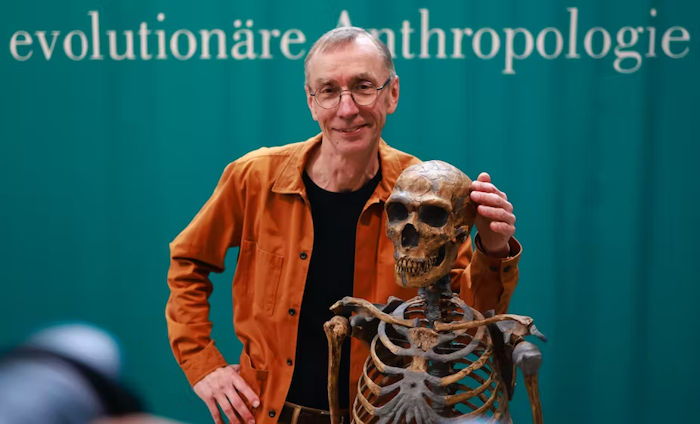Nobel Prize: Svante Pääbo’s Ancient DNA Discoveries Offer Clues As To What Makes Us Human
AncientPages.com - The Nobel prize in physiology or medicine for 2022 has been awarded to Svante Pääbo from the Max Planck Institute for Evolutionary Anthropology in Leipzig, Germany, "for his discoveries concerning the genomes of extinct hominins and human evolution."
Credit: Adobe Stock - Gorodenkoff
In other words, Pääbo has been awarded the prestigious prize for having sequenced the genomes of our extinct relatives, the Neanderthals and Denisovans, and for the fact that these discoveries have resulted in novel insights into human evolution.
BREAKING NEWS:
The 2022 #NobelPrize in Physiology or Medicine has been awarded to Svante Pääbo “for his discoveries concerning the genomes of extinct hominins and human evolution.” pic.twitter.com/fGFYYnCO6J— The Nobel Prize (@NobelPrize) October 3, 2022
Pääbo is widely regarded as having pioneered the field of ancient DNA, a research area dedicated to the recovery and analysis of DNA from historic and prehistoric remains.
Although Pääbo did his Ph.D. in medical science at Uppsala University in Sweden in the early 1980s, he also studied Egyptology when he was at Uppsala. It was a logical next step that he took tools from molecular biology, garnered from his expertise in medical science, to better understand human prehistory.
Extracting DNA from ancient bones
Beginning in the 1980s, Pääbo studied ancient DNA in material ranging from mummified humans to extinct ground sloths. This work was technically challenging because ancient DNA is significantly degraded and can be contaminated.
In the decade that followed, he developed a series of methods and guidelines to recover and interpret authentic DNA and to minimize the risk of contamination from modern sources, especially from contemporary humans.
In the early 1990s, there was significant excitement in the field about the possibility of recovering DNA from dinosaurs. However, based on his knowledge of how DNA degrades over time, Pääbo remained skeptical that DNA could survive such a long time. He was later proven right.
For many of his colleagues, it was clear that Pääbo's goal was always to recover Neanderthal DNA. But he took his time and carefully developed the methods for recovering and authenticating ancient DNA until these methods were mature enough to accomplish this objective.
Finally, in 1997, Pääbo and his colleagues published the first Neanderthal DNA sequences. In 2010 this was followed by the entire Neanderthal genome (that is, all the genetic information stored in the DNA of one Neanderthal).
Only a few years later, the group also published the genome from a previously unknown type of human, the Denisovans, distantly related to Neanderthals. This sequencing was based on a 40,000-year-old fragment of bone discovered in the Denisova cave in Siberia.
By virtue of being able to compare these with human genomes, one of the most important findings of Pääbo's work has been that many modern humans carry a small proportion of DNA from Neanderthals and Denisovans. Modern humans picked up these snippets of DNA through hybridisation, when modern and archaic humans mixed, as modern humans expanded across Eurasia during the last ice age.
Svante Pääbo has won the Nobel prize in physiology or medicine for 2022. EPA-EFE/HANNIBAL HANSCHKE
For example, particular Neanderthal genes affect how our immune system reacts to infections, including COVID-19. The Denisovan version of a gene called EPAS1, meanwhile, helps people survive at high altitudes. It's common among modern-day Tibetans.
At the same time, in comparing the genomes of Neanderthals and Denisovans with those of modern humans, Pääbo and his colleagues have been able to highlight genetic mutations that are not shared. A large proportion of these are connected to how the brain develops.
By revealing genetic differences that distinguish living humans from our extinct ancestors, Pääbo's influential discoveries provide the basis for exploring what makes us uniquely human.
Written by Love Dalén, Professor in Evolutionary Genetics, Centre for Palaeogenetics, Stockholm University and Anders Götherström, Professor in Molecular Archaeology, Department of Archaeology and Classical Studies, Stockholm University
This article is republished from The Conversation under a Creative Commons license. Read the original article.
More From Ancient Pages
-
 Surprising Ancient Secrets Of The ‘Second Thoth’ And God Osiris
Ancient Mysteries | Sep 27, 2018
Surprising Ancient Secrets Of The ‘Second Thoth’ And God Osiris
Ancient Mysteries | Sep 27, 2018 -
 Odin: Norse God Of War And Magic – Most Complex Figure Of The Norse Pantheon
Myths & Legends | Oct 27, 2016
Odin: Norse God Of War And Magic – Most Complex Figure Of The Norse Pantheon
Myths & Legends | Oct 27, 2016 -
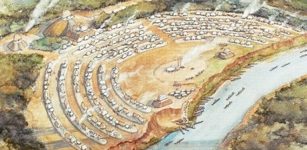 Is The Poverty Point Octagon World’s Largest Ancient Solstice Marker?
Featured Stories | May 21, 2017
Is The Poverty Point Octagon World’s Largest Ancient Solstice Marker?
Featured Stories | May 21, 2017 -
 Ancient Mystery In The Alpes Remains Unsolved Because Of Contradicting Information
Ancient Mysteries | May 15, 2018
Ancient Mystery In The Alpes Remains Unsolved Because Of Contradicting Information
Ancient Mysteries | May 15, 2018 -
 Secrets Of The Lost Ancient Sahara Civilization
Civilizations | Oct 26, 2018
Secrets Of The Lost Ancient Sahara Civilization
Civilizations | Oct 26, 2018 -
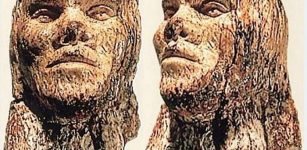 Incredible Mammoth Ivory Male Head From Dolni Vestonice, Czech Dated To 26,000 BC
Artifacts | Jun 23, 2015
Incredible Mammoth Ivory Male Head From Dolni Vestonice, Czech Dated To 26,000 BC
Artifacts | Jun 23, 2015 -
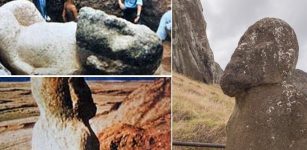 Unusual Tukuturi Statue On Easter Island Remains An Unexplained Mystery
Civilizations | Jan 16, 2019
Unusual Tukuturi Statue On Easter Island Remains An Unexplained Mystery
Civilizations | Jan 16, 2019 -
 Mysterious Ancient “Fish People” – Who Were They And How Did They ‘Change’ Civilizations Worldwide?
Ancient Mysteries | Dec 20, 2021
Mysterious Ancient “Fish People” – Who Were They And How Did They ‘Change’ Civilizations Worldwide?
Ancient Mysteries | Dec 20, 2021 -
 Mysterious Ancient Village In A Prehistoric Anomalous Zone – Dangerous Underground Secret – Part 2
Ancient Mysteries | Jul 28, 2020
Mysterious Ancient Village In A Prehistoric Anomalous Zone – Dangerous Underground Secret – Part 2
Ancient Mysteries | Jul 28, 2020 -
 Pharaoh Apries – Was The Betrayed Egyptian King Murdered By His Own People?
Featured Stories | Jun 30, 2021
Pharaoh Apries – Was The Betrayed Egyptian King Murdered By His Own People?
Featured Stories | Jun 30, 2021 -
 Mysterious Lost Civilization Of Chu And Its Powerful Kingdom
Civilizations | Nov 29, 2018
Mysterious Lost Civilization Of Chu And Its Powerful Kingdom
Civilizations | Nov 29, 2018 -
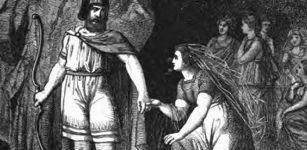 Freya And Her Lovely Husband Odr, God Of Summer Sun And Passion In Norse Mythology
Featured Stories | Dec 3, 2018
Freya And Her Lovely Husband Odr, God Of Summer Sun And Passion In Norse Mythology
Featured Stories | Dec 3, 2018 -
 Caligula’s Stunning 2,000-Year-Old Sapphire Ring Tells Of A Dramatic Love Story
Artifacts | Jul 10, 2020
Caligula’s Stunning 2,000-Year-Old Sapphire Ring Tells Of A Dramatic Love Story
Artifacts | Jul 10, 2020 -
 Amakuni – Legendary Japanese Blacksmith And Father Of The Samurai Sword
Featured Stories | Jan 23, 2019
Amakuni – Legendary Japanese Blacksmith And Father Of The Samurai Sword
Featured Stories | Jan 23, 2019 -
 Irish God Ogma – Outstanding Warrior And Inventor Of The Ogham Script
Myths & Legends | Jul 3, 2024
Irish God Ogma – Outstanding Warrior And Inventor Of The Ogham Script
Myths & Legends | Jul 3, 2024 -
 Strange Reports Of A Mysterious Stone-Throwing Phenomenon And Invisible Entity Encountered Worldwide
Featured Stories | Dec 4, 2023
Strange Reports Of A Mysterious Stone-Throwing Phenomenon And Invisible Entity Encountered Worldwide
Featured Stories | Dec 4, 2023 -
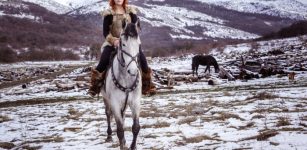 Scathach – The Shadowy One – Legendary Martial Arts Teacher Who Trained Cuchulainn And Other Warriors
Featured Stories | Mar 4, 2019
Scathach – The Shadowy One – Legendary Martial Arts Teacher Who Trained Cuchulainn And Other Warriors
Featured Stories | Mar 4, 2019 -
 Mysterious Great Pyramid Of China: Almost Totally Unknown Even To Most Chinese
Ancient Mysteries | Oct 10, 2015
Mysterious Great Pyramid Of China: Almost Totally Unknown Even To Most Chinese
Ancient Mysteries | Oct 10, 2015 -
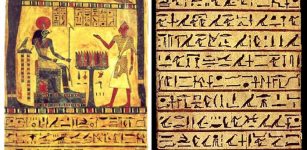 Strange History Of Stele Of Ankh-ef-en-Khonsu – ‘Stele Of Revealing’ Gave Birth To Thelema, A New Religion
Artifacts | Apr 3, 2018
Strange History Of Stele Of Ankh-ef-en-Khonsu – ‘Stele Of Revealing’ Gave Birth To Thelema, A New Religion
Artifacts | Apr 3, 2018 -
 Chaneques: Mischievous Legendary Tricksters In Mexican Folklore
Featured Stories | Apr 14, 2020
Chaneques: Mischievous Legendary Tricksters In Mexican Folklore
Featured Stories | Apr 14, 2020

